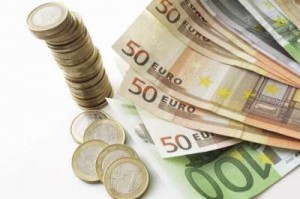The world watches as the fate of Euro Zone hangs in the balance. Economists and foreign investors express their misgivings about the present economic condition of several EU countries and the so-called austerity measures that, according to some, only made things worse. Austerity measures were adopted by the government in a last ditch effort to keep the problem of insolvency at bay by imposing higher taxes and putting restrictions on expenses. This policy, however, has become more of a problem in most EU countries rather than a part of the solution.
The birth of Euro
In the year 1992, Maastricht Treaty made a provision to adopt a single currency in the Euro Zone. It is the sole currency used in seventeen EU states: Spain, Slovenia, Slovakia, Portugal, the Netherlands, Malta, Luxembourg, Italy, Ireland, Greece, Germany, France, Finland, Estonia, Cyprus, Belgium, and Austria. It is compulsory for EU member states to adopt the Euro currency after meeting budgetary and monetary requirements. However, not all member states were able to meet this requirement while others choose not to adopt the currency by negotiated exemptions and by deliberately not meeting the minimum requirements. “Euro” became the official name of the Euro Zone currency on December 16, 1995. It is represented by the Greek epsilon with to parallel lines (€) signifying Europe and the currency’s stability.
Unforeseen effects
Having a single official currency to be used in many different countries was first conceived to reduce the risk of constantly fluctuating currency exchange rates. It also removed the cost involved in the process. Pricing in countries involved will become more consistent and reduce arbitrage caused by differences in prices.
However, like any other economic union, failure to address some structural defects of using one currency can pose a great risk to the whole union. The economic downturn of the Euro Zone was caused by a number of interrelated factors: globalization of finance, easy credit conditions, international trade imbalances, real-estate bubbles, slow economic growth.
The biggest factor seen as the culprit of the Euro Zone crisis is the policy and regulatory control of investments which resulted in economic bubble from one country to another. To solve this, they would have to sell their assets at a lower price to pay for debts while the liabilities borrowed from global investors remain unchanged. Furthermore, financial markets are now imposing usurious interest rates which will eventually diminish the value of their investments. This puts much pressure in the Euro Zone’s economy which attempts to recover from massive losses by imposing austerity measures, e.g. higher taxes, lesser expenses.
Possible Solution
To combat the effects of Euro Zone crisis, the Euopean Union created the European Financial Stability Facility (EFSF) on May 9, 2010. EFSF aims at reducing the impact of financial depression in severely affected EU member states by providing them with financial assistance through from the European Financial Stabilization Mechanism and IMF.
Recommended Articles:
Travel Destinations in Mediterranean


